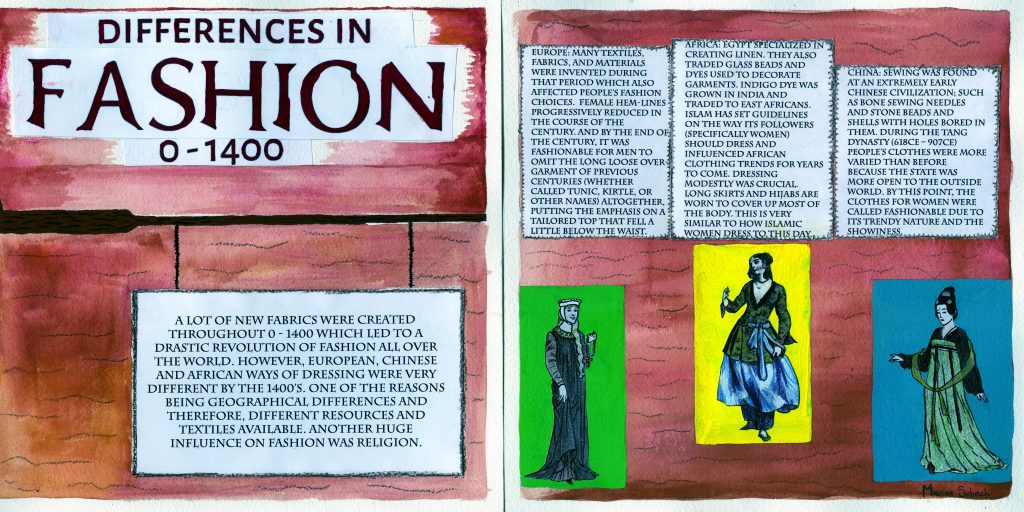Chaim Soutine: Expressionism, Fauvism & Early 20th Century
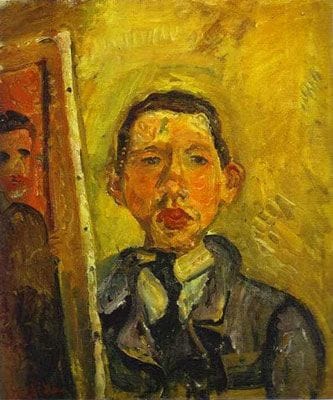
Chaim Soutine is an expressionist artist that lived and worked in Paris at the height of the modern era.
Despite dominant trends toward abstraction, Soutine maintained a firm connection to the recognizable subject matter. His innovation was in the way he chose to represent his subjects: with a thick impasto of paint covering the surface of the canvas, the palette, visible brushwork, and forms translated the artist’s inner torment.
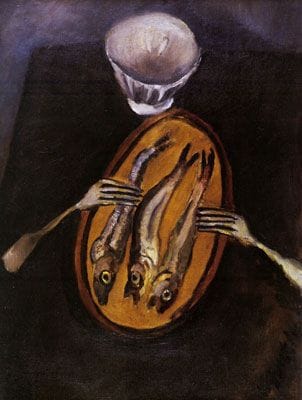
There is a lot of symbolism in most of Soutine’s work. For example, here, in Still Life with Herrings, he made the forks look like arms reaching for the skinny fish to represent hunger. Soutine suffered great poverty while growing up and constant stomach ulcers that often made eating impossible.

In this painting, he confronts his figure head-on, with little distinction between the woman and the water itself. Her dress, skin, and posture are all static while not entirely motionless – much like the water she is entering. Soutine’s brushwork drastically flattens the figure and her surroundings, removing the feeling of natural depth.
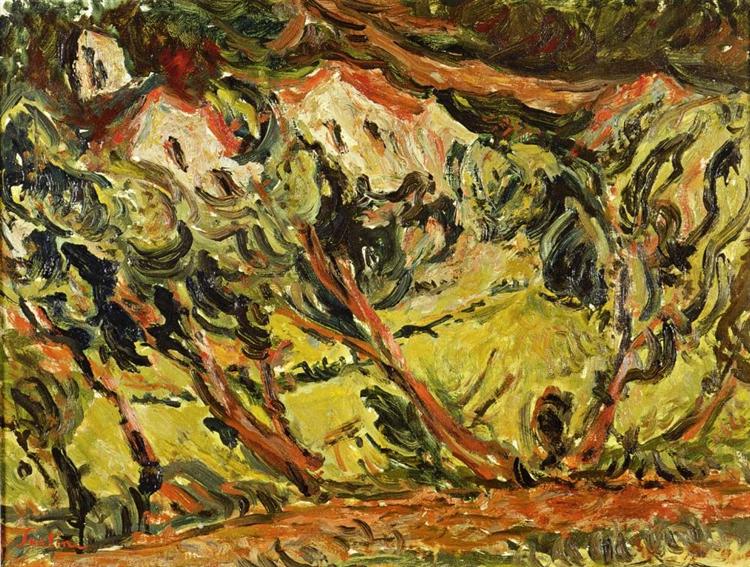
Chaim Soutine was not a fan of the outdoors, so he rendered his landscapes with his own brand of anxiety and gloominess, indicated by scenery that seems to shift across the canvas.
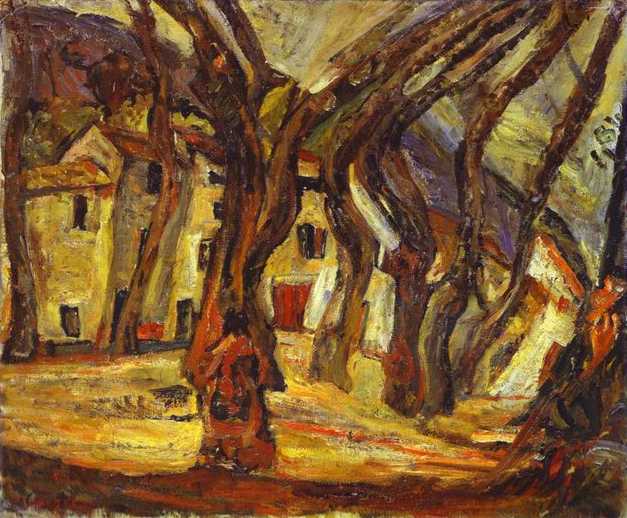
Sources
https://www.theartstory.org/artist-soutine-chaim.htm
(1) Soutine’s Portraits: Cooks, Waiters & Bellboys – a tour with Fred Sirieix – YouTube
Survey 7: Russian government was just as bad in 1905…
BLOODY SUNDAY
On the 22nd of January, 1905 Bloody Sunday Massacre took place in the Russian capital at the time, St Petersburg. Soldiers of the Imperial guard fired on protestors who were led by the Orthodox Priest Father Georgy Gapon as they marched towards the Winter Palace where they planned to present a petition to Tzar Nicholas II.
By 1905 there was growing dissatisfaction amongst the urban working class. Father Gapon had established the “Assembly of the Russian Factory and Mill Workers of the City of St. Petersburg” to promote workers’ rights in 1904. The workers wanted to have 8-hour long workdays but the owners of the factories rejected their request reason being that the factory would go bankrupt as all the other factories would still make their employees work 14 hours a day. But after four Assembly members from the Putilov ironworks were fired from their jobs in December 1904, workers across the city went on strike. Capitalizing on the situation Father Gapon drafted a petition to the Tsar calling for improved working conditions and other reforms that received 150,000 signatures.
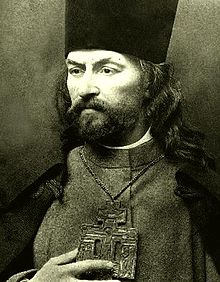
Gapon had already notified the authorities of the petition and the march, and in response, approximately 10,000 troops from the Imperial Guard were placed around the palace. However, why they began firing on the peaceful march is unclear. Even the number killed or injured is uncertain with estimates ranging from the government’s official figure of 96 dead to revolutionary claims of more than 4,000.

The Tsar was not in the palace at the time, and did not give an order for the troops to fire, but was widely blamed for the massacre. In response strikes and protests spread around the country, and eventually developed into the 1905 Revolution.
After hundreds of strikes, October Manifesto was created. Officially “The Manifesto on the Improvement of the State Order”, is a document that served as a precursor to the Russian Empire’s first Russian Constitution of 1906. Duma was formed and was supposed to approve and disapprove any new laws. That was supposed to help develop a more democratic society, however, not much had changed, because all the members of the Duma were Tzar Nicholas’s puppets so he still got to make all decisions by himself.
:max_bytes(150000):strip_icc()/Duma-III-last-session-58affdac5f9b58604640f4b9.jpg)
Sources
Russian Revolution of 1905 | Britannica.com
https://www.spb.kp.ru/daily/26328.2/3210114/
https://spartacus-educational.com/RUSgapon.htm
http://www.bbc.co.uk/history/bloody_sunday
Lecture Summary
This lecture covered the period from 1905 until 1915 and discussed the philosophy and effects of modernism on our society, as well as some political events that would eventually be reasons for the First World War. I found it extremely interesting that the style that was born over a hundred years ago is still considered modern. Current designers still rely on the saying “form follows function” as the basis of their creative process.
Gustave Moreau: Impressionism & Post Impressionism

Gustave Moreau was a major figure in French Symbolist painting whose main emphasis was the illustration of biblical and mythological figures. His mother was a musician and his father an architect, so Moreau was exposed to art from a very young age. His parents ensured that he got a good education. At the age of 15, he visited Rome, Italy where he developed a keen interest in art. Later, at around the age of 18, he studied with François-Edouard Pico, the Neoclassical painter, and prepared for the entrance exam to the Ecole des Beaux-Arts in Paris.
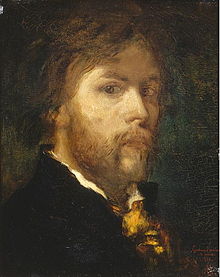
Gustave Moreau’s visionary paintings speak to an obsession with the otherworldly which makes him one of the most fascinating artists of 19th century. His unusual faith, called Neo-Platonism, inspired him to pay close attention to the imperfection of our physical world. He believed that by doing so he was “allowing divine vision to speak through his brush”.

Most of his art is focused on biblical scenes. However, he would interpret them according to his own ideas, imagination, and faith. There is also quite a lot of symbolism in his work. He took those symbols to represent humans’ desires and emotions in the abstract form. These are all reasons for why he is considered a forerunner of symbolism and realism.


Sources:
https://hyperallergic.com/285470/paint-is-the-language-of-god-the-gospel-according-to-gustave-moreau/
https://www.theartstory.org/artist-moreau-gustave.htm
https://en.musee-moreau.fr/gustave-moreau/biography
Survey 6: Fly Me to the Moon, Lumiere Brothers!
Lecture Summary
Throughout 1895 – 1905 a lot of events happened that were the foundation for the society we live in nowadays. Women started fighting for their rights for the very first time in history, the first Nobel Prizes were awarded, and new technologies like, cinematographe, were developed.

The Lumière Brothers: Pioneers of cinema
A lot of people are under the impression that the development of modern film technology is all thanks to the famous inventor, Thomas Edison, and his employee, William Dickson. Together, they developed two very first film technologies: kinethograph (basically a camera), and kinetoscope (a single viewer exhibition device that you use to watch kinethograph films). However, while they were busy inventing the two in the United States, people all over the world were going after a similar goal. In Lyon, France, the Lumiere brothers invented a lightweight all-in-one motion picture device that made movies and exhibited them. They called it Cinematographe. It played back the developed roll of film shining a bright light through it to show images.

Voyage dans la Lune
Georges Melies, a French magician, director, and theatrical special effects specialist, got invited to one of the Lumier brothes’ movie screenings. And it of course blew his mind. He tried to purchase the cinematographe on the spot but the Lumier brothers weren’t ready to sell. But Melies did not give up. After searching all over the world, he ended up buying an animatograph. He now had the opportunity to direct the very first science fiction movie in 1902 called Le Voyage dans la Lune or A Trip to the Moon. Inspired by a wide variety of sources, including Jules Verne’s novels “From Earth to the Moon” and “Around the Moon”, the film follows a group of astronomers who travel to the Moon in a capsule, explore the Moon’s surface, escape from an underground group of aliens, and return in a splashdown to Earth. It features a cast of French theatrical performers, led by Méliès himself in the main role of Professor Barbenfouillis, and is filmed in the overtly theatrical style for which Méliès became famous.
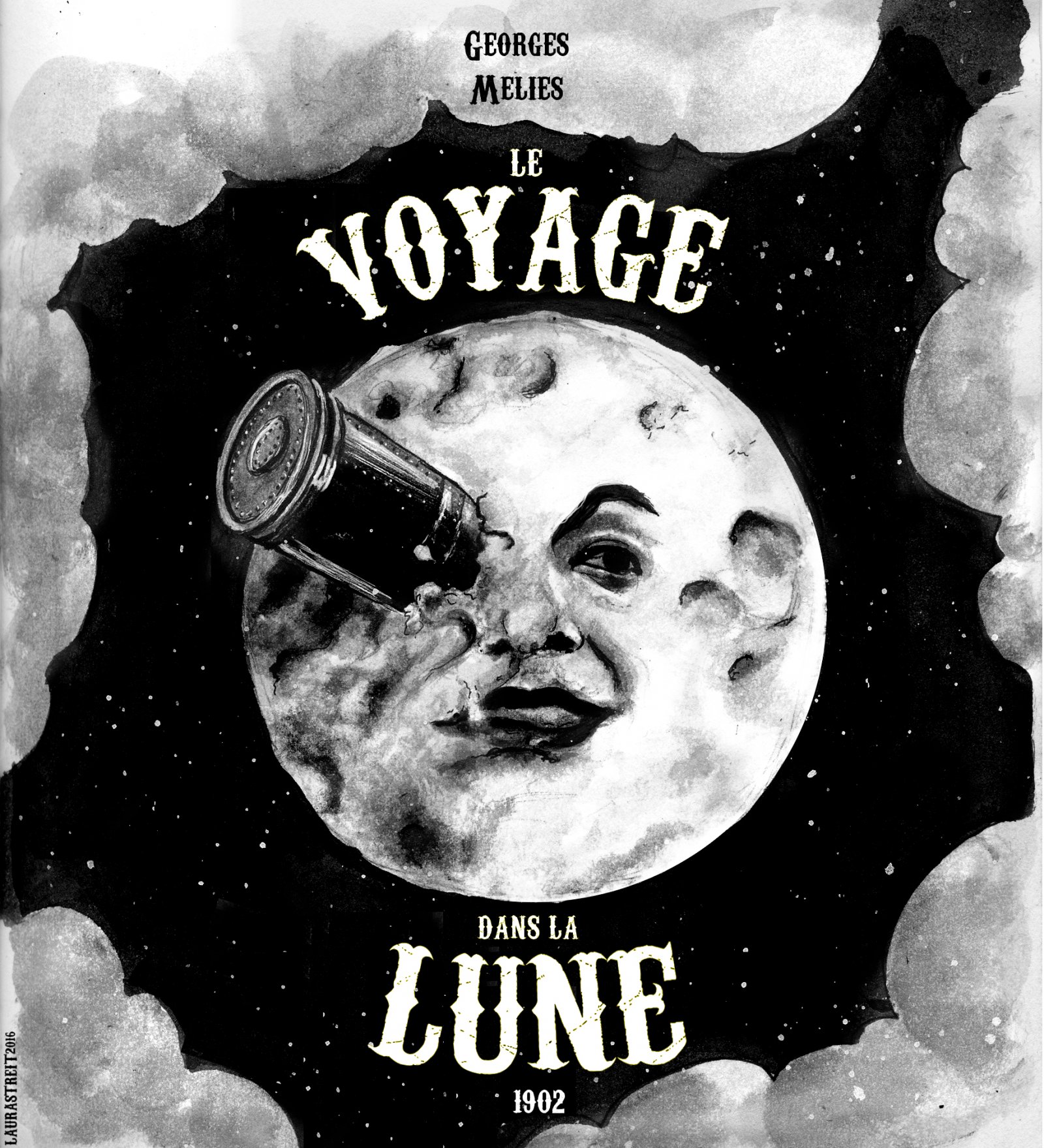
https://www.youtube.com/watch?v=_FrdVdKlxUk
Sources:
https://en.wikipedia.org/wiki/A_Trip_to_the_Moon
https://www.britannica.com/biography/Lumiere-brothers
William Blake: Realism, Pre-Impressionism & Pre-Raphaelites
William Blake was an English poet, painter, and printmaker. Largely unrecognized during his lifetime, Blake is now considered a seminal figure in the history of the poetry and visual arts of the Romantic Age.

Most of Blake’s works have very unusual stories behind them which is one of the reasons he got rejected by the society during his lifetime. For example, in this piece called “The House of Death”, he illustrates lines from Book XI of John Milton’s poem Paradise Lost. The Archangel Michael shows Adam the misery that will be inflicted on Man now he has eaten the Forbidden Fruit. In a vision of ‘Death’s ‘grim Cave’ Adam sees a ‘monstrous crew’ of men afflicted by ‘Diseases dire’.

I, personally, really like this kind of paintings because they make me see a different perspective on famous stories and the world around me. Here are a few more examples of William Blake’s eye-opening work.



Sources:
https://www.tate.org.uk/art/artists/william-blake-39
https://www.poetryfoundation.org/poets/william-blake
https://www.britannica.com/biography/William-Blake
Survey 5: Posters & Advertisements
Lecture Summary: Wealthy people had starter traveling so a lot of new cultures were discovered by the western society which influenced the people’s perception of the world. Exhibitions were arranged for the average people to be able to experience things from all over the world. Europeans were fascinated with the Japanese culture which led to Japonism. The “Bible of Ornaments” was created which included a lot of new patterns adopted from different cultures. However, alongside the obsession with the unexplored, a lot of artists started looking back on the old patterns from the Renaissance and Rococo. Mass production was becoming a problem for artists – now things could be made a lot faster and cheaper. But newer things were also of poor quality. So, the arts and crafts movement was started.
Poster Design in France
For today’s designer, the Victorian era might seem like a complete nightmare. In both, interior and poster design, it was typical to add as many patterns and information as possible, leaving almost no empty places.
A lot of people say that the 1890’s was the golden age for posters. Most of the look very visually appealing. However, it took a while for the designers to get to that successful point. A French poster designer, Jules Chéret, was trying out newly explored patterns and ways of drawing in his early works. Some of it looks extremely busy and overcrowded – there is no specific point for the eye to focus on.

The Improvement
It didn’t take Cheret a long tome to figure out what works and what doesn’t. His later work is what was the beginning of the posters we create nowdays. He made a lot of changes, and in opinion, they look like they were almost done by a completely different person. They were clean, lively, and easy to understand. Here’s an example of one of my favourite works by Jules Cheret.

Jules Cheret’s Influence
Before Jules Cheret’s work, posters weren’t influencing the audience nearly as well as they were after. The world of advertising was completely changed after Cheret. Now advertisements were more simple and straight-forward than ever.

References:
https://www.antiqueposters.com/Saxoleine-Patrole-de-Surete-Maitres-13-p/1658.htm
http://www.pictorem.com/43218/Quinquina%20Dubonnet,%201895,%20Jules%20Cheret.html
https://www.britannica.com/biography/Jules-Cheret
http://www.windsorfineart.com/jules-cheret/
Neoclassicism 1750 – 1850 – Survey 4
Lecture Summary: During the lecture, we talked about romanticism and the industrial revolution. The 1750’s was the time of mass production in large cities, and, therefore mass consumption. There were more jobs, more money for people to spend on secondary needs, and more things were made for them to buy. Now, there was a huge need for advertising, so people were creating posters, and more newspapers were printed.
Architecture Overview
The style of architecture was changing a lot as well. Since people started producing new materials like iron and steel, architecture and engineering began to separate. Architects started to focus more on the aesthetic aspect of the buildings they’d been hired to work on.

Features of Neoclassical Architecture
Neoclassicism was yet another return to the Classical Orders of Greek and Roman Antiquity on a monumental level, except with the addition of development of all the engineering advances and new materials of the modern era. It was marked by large-scale structures, supported and/or decorated with columns, and enlarged Renaissance-style domes. Sometimes columns were multiplied and stacked, to create an impression of height, while facades were decorated with a combination of colonnades, rotundas and porticoes.
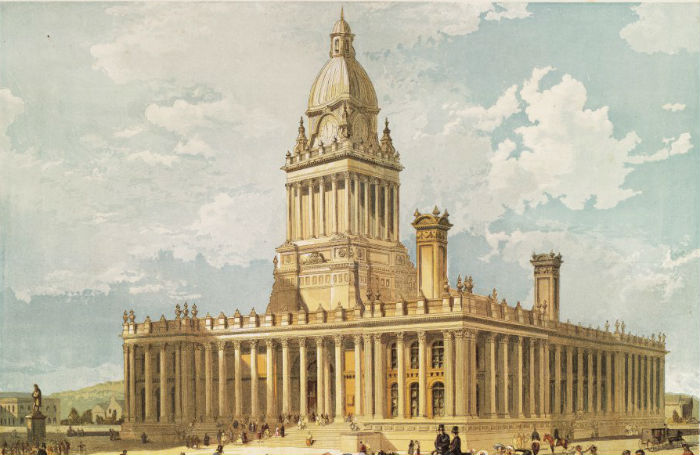
France
Neoclassicism was born in Italy, although it became especially active in France largely because of the presence of French designers trained at the French Academy in Rome. Classical features had begun appearing in architectural design at the end of Louis XVI’s reign, who began the building of the Palace of Versailles, one of the amazing masterpieces of architecture. This style was then adopted during the first Napoleonic empire: High Society employed it on their private homes, along with extras like faux ruins, follies, grottos, and fountains to decorate the landscape, while more experimental architects used it to design a range of civic structures.
Jacques Germain Soufflot
Jacques-Germain Soufflot was a French architect, a leader in the development of Neoclassical architecture and the designer of the Church of Sainte-Geneviève (the Panthéon) in Paris. He claimed to be self- taught but he lived in Rome for about 20 years and studied the classical monuments there as well as the Greek temples at Paestum. One of his most influential accomplishments was designing of Sainte-Geneviève, which was intended to be a church. However, because of the classical origins of the design, when the Revolution abolished religion, the church was secularized and renamed the Panthéon. Unfortunately, much of the decoration was removed. The effect of a light interior space was destroyed, resulting in the somewhat gloomy monument that the Panthéon is today.

Sources:
http://www.visual-arts-cork.com/history-of-art/neoclassical-architecture.htm#neoclassicism
https://www.britannica.com/biography/Jacques-Germain-Soufflot
https://www.architecture.com/knowledge-and-resources/knowledge-landing-page/classical-classical-revival-neo-classical
Jean-Baptiste-Siméon Chardin – Neoclassicism, Romanticism & Rococo
Jean-Baptiste-Siméon Chardin (November 2, 1699 – December 6, 1779) was a French painter. He is considered a master of still life. He lived on the Left Bank near Saint-Sulpice until 1757, when Louis XV granted him a studio and living quarters in the Louvre.

Some of his earlier work has pretty minimal, almost boring composition. For example, in his painting Glass of Water and A Coffee Pot, the title pretty much sums up the whole composition. However, I find this painting beautiful because of the luminosity of the glass of water. It’s fascinating how such a small detail can bring so much life into the painting.

Chardin has also done some work that has a more original and creative composition. A lot of his work involves animals(dead or alive) which is another one of the reasons I chose to write a blog post about him. For example, in Still Life With Cat And Fish the way he painted the cat tells you the whole story of the painting. Its pose shows its desire for the fish, as well as the fear that it might get caught stealing someone else’s food.

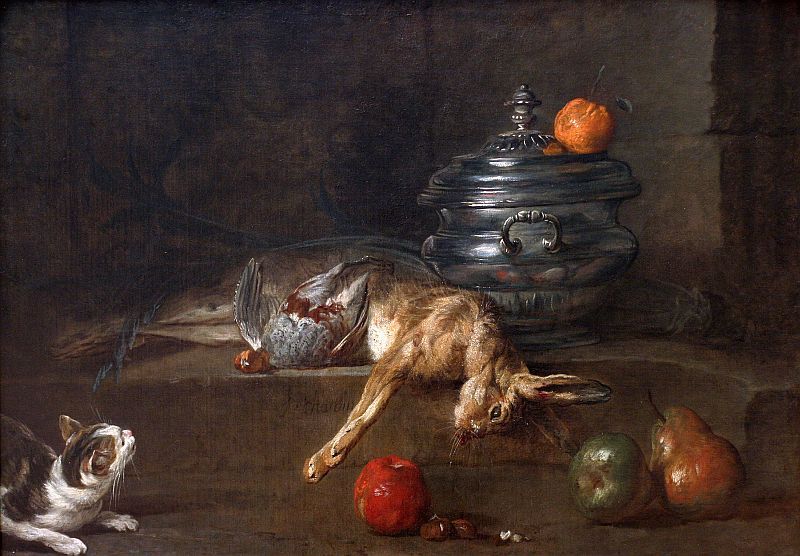
In his older years, Chardin did a lot of pastel portraits which are just as amazing as his early oil paintings.

Sources:
http://www.jean-baptiste-simeon-chardin.org/
History Book Spread Survey #2
In this spread, I challenged myself to compare the fashion of three different parts/cultures of the world: Europe, Africa, and China. I’ve printed out pictures of some outfits and coloured them with pencils. The background is brown and plain so it doesn’t distract the viewer’s eye. I chose a serif font to give my spread an old-fashioned look. I used the same font for the description of the outfits, which I feel like I could’ve done a bit better since it can be hard to read.